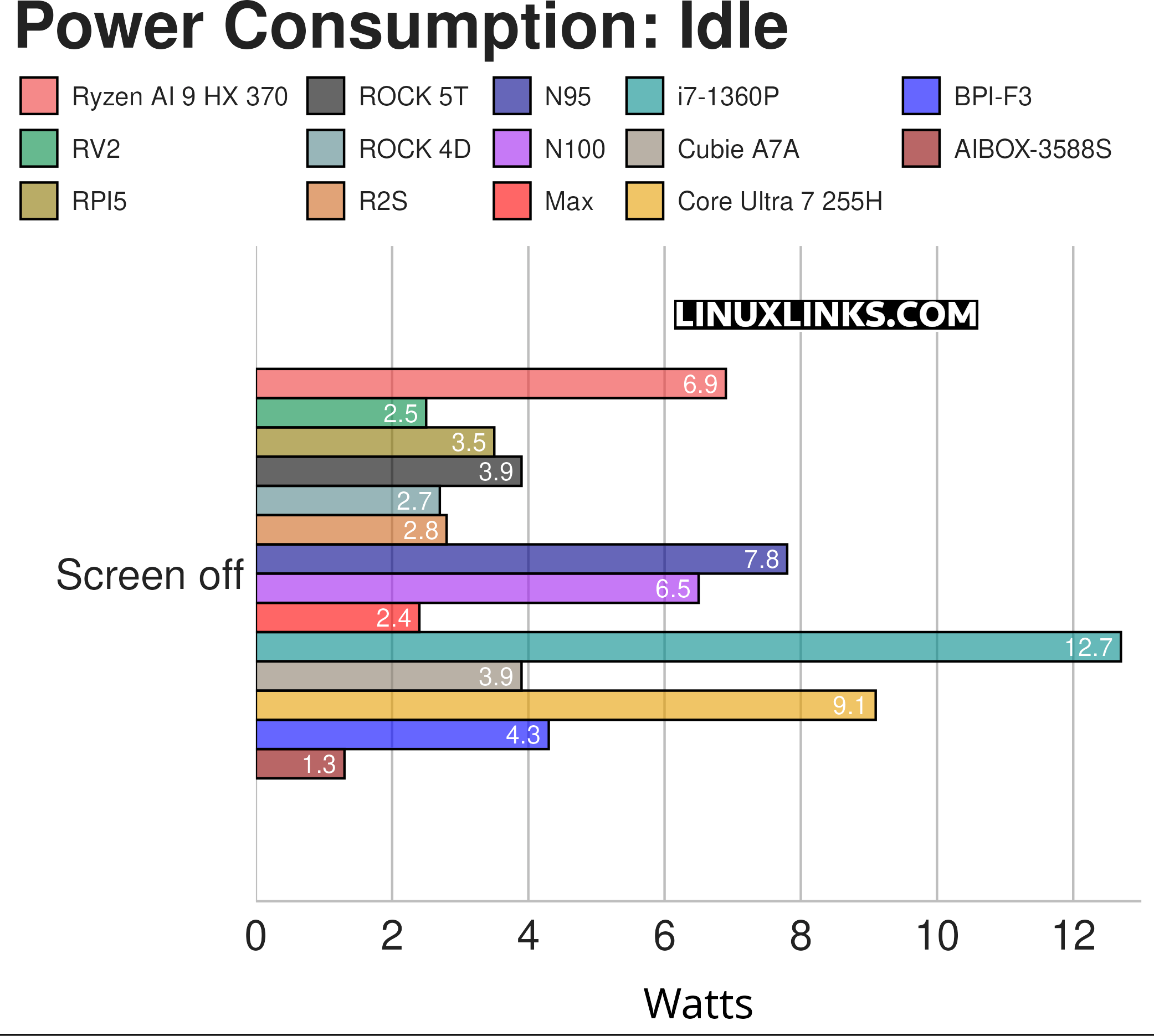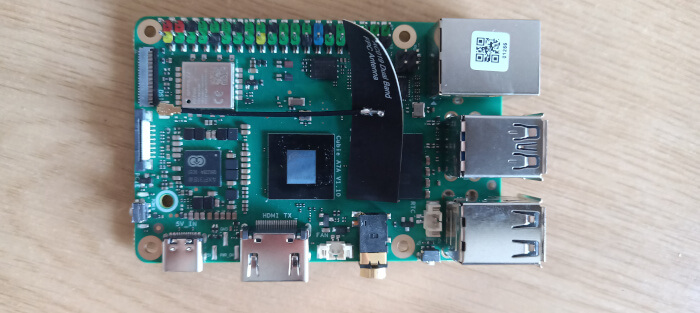This is a new series looking at the Radxa Cubie A7A single board computer. It’s billed as an ultra-compact yet feature-rich SBC designed to deliver powerful performance in space-constrained environments.
Powered by the Allwinner A733 SoC, the Cubie A7A features a hybrid octa-core high-performance CPU (dual-core Arm Cortex-A76 and hexa-core Arm Cortex-A55 big.LITTLE architecture, up to 2.0GHz), integrated 3 TOPS NPU, and Imagination BXM-4-64 MC1 GPU, providing AI and multimedia processing capabilities.
For this article in the series, I’m looking at the power consumption of the Radxa Cubie A7A.
I’ll see how the Radxa Cubie A7A (“Cubie A7A”) compares to various small computers. They are the Radxa ROCK 4D (“ROCK 4D”), Radxa Rock 5T (“ROCK 5T”), the Firefly AIBOX-3588S (“AIBOX-3588S”), the Orange Pi 5 Max (“Max”), the Orange Pi RV2 (“RV2”), the Orange Pi R2S (“R2S”), Banana Pi BPI-F3 (“BPI-F3”), and the Raspberry Pi 5 (“RPI5”). I’ve also included a few Intel mini PCs with the following CPUs (“N95”, “N100”, “i7-1360P” and “Core Ultra 7 255H”), as well as an AMD mini PC, the Minisforum AI X1 Pro (“Ryzen AI 9 HX 370”). The latter CPUs are much more powerful than those found in the SBCs.
Let’s begin with power consumption at idle. The results are captured in the chart below.

The Cubie A7A’s power consumption of 3.9W at idle is low but higher than the other SBCs with the exception of the ROCK 5T. At a later stage, I’ll want to see the power consumption when only its RISC-V coprocessor is awake.
The chart needs explanations to put the results into context.
- The chart measures the power consumption of each system (not only the CPU). It doesn’t include the power drawn by a monitor.
- All the machines have onboard graphics only with the exception of the Orange Pi R2S which has no video output.
- The Intel and AMD Mini PCs are using the Power Saver CPU governor. The Radxa Cubie A7A, Radxa ROCK 4D, Radxa ROCK 5T, Firefly AIBOX3588S, Orange Pi 5 Max, the Orange Pi RV2, Orange Pi R2S and Raspberry Pi 5 are using their default settings with no underclocking. At idle the Firefly AIBOX-3588S runs at 400 MHz, both the Radxa Rock 5T and Orange Pi 5 Max runs at 408 MHz, the Radxa Cubie A7A runs at 416 MHz, and the Pi 5 runs at 1500 MHz. The Orange Pi RV2, R2S and Banana Pi BPI-F3 run at 1600 MHz.
- WiFi and Bluetooth are enabled on all machines with the exception of the Orange Pi R2S and the Firefly AIBOX-3588S which don’t have either.
- The Radxa Cubie A7A, Radxa ROCK 4D and Radxa ROCK 5T are running Radxa OS (a customized Debian 12 with KDE Plasma), AIBOX-3588S is running Debian 12 (Bookworm), the Orange Pi 5 Max is running Ubuntu 22.04 (Jammy Jellyfish), while the RV2 is running Ubuntu 24.04.2 (Noble Numbat). The Orange Pi R2S is running Ubuntu Server 24.04. The Pi 5 is running the Raspberry Pi OS (which is based on Debian 12). The Banana Pi BPI-F3 is running Bianbu OS 24.04. The other machines are running Ubuntu 25.04.
Next page: Page 2 – Power Consumption With CPU Stressed
Pages in this article:
Page 1 – Power Consumption With System Idle
Page 2 – Power Consumption With CPU Stressed
Page 3 – Electricity Costs / Specifications
Complete list of articles in this series:
| Radxa Cubie A7A | |
|---|---|
| Introduction | Introduction to the series and interrogation of the Cubie A7A |
| Benchmarks | Benchmarking the Cubie A7A |
| Power | I compare the Cubie A7A's power consumption to other machines |
| Radxa OS | A Debian-based Linux distribution with KDE Plasma |
